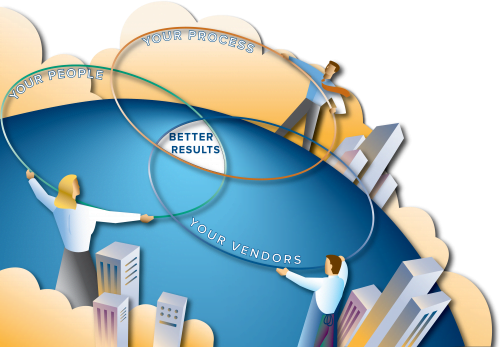A company is very much like a complex organism. The workers serve as different organs, each with a specialized function, and the organism as a whole thrives and exudes energy if each organ is healthy. Like every other organism, an organization is part of a great race, competing and fighting to survive and be the best. When it comes to survival, it can only be achieved through adaptation.
There are species that don’t exist anymore because they couldn’t adapt to the change going on around them. We understand that change can be uncomfortable and terrifying at times, but for companies that refuse to adapt, the metaphorical extinction becomes all too real.
Why Companies Fear Change
One of the reasons that companies choose not to risk change is that they are threatened by it. The general mentality is why fix something that’s not broken, and a common denial of the need to oil something that would go rusty and eventually become obsolete if not tended to enough. We cannot stress enough how dangerous it can be to have such a mindset.
Even if you’re the best, the unfortunate fact (or fortunate beauty) of the capitalist world is that you can lose your status in a heartbeat. If companies stay too rigid in their ways, they’re bound to lose out in the long run. Globalization and technological reform require slight adjustments in short term goals or comfortable routines. Renovation is imperative for progress and staying afloat in this fast paced world. Progress is the best gauge of success and progress comes from change.
Sometimes the change needs to be on a foundational level. But not all changes have to be dramatic. Sometimes the change could be minute. After all – less often means more.
Change Often Brings Welcome Results
Since we’ve established how important change is, we understand that this may mean slight adjustments are required on many levels. But what most companies need to understand is that such change isn’t a colossal risk if it’s made through intelligent strategy and research. For example, a minor change made through the adoption of cloud software is a cost friendly, minimally disruptive and efficient change that can provide tremendous benefit to an organization.
Take for instance an organization that already has people and a process in place for the coordination, acquisition and management of custom-printed marketing materials. They know there must be a better way to get the job done; one that causes fewer headaches is more efficient and maybe even saves money.
When this organization looks at their options, they’ll see that most require a fairly extreme level of change, which may very well make them take a step back. However, cloud based software that simply augments their own people, processes and vendors with the tools, mechanisms and insight to achieve better results isn’t actually much of a change to make.
Since that is the business we are in here at eLynxx Solutions we see this day in and day out. In all honesty overcoming an organization’s reluctance to change is often one of the biggest barriers we face in helping them get the results they deserve. But, once they open up to the slight changes required in the adoption of eLynxx software and begin reaping the rewards, they wonder why they ever feared making the change in the first place.
Being Open to Change is Being Open to Success
Whether we’re talking about getting better results from your marketing supply chain or any other area of an organization, making a change to a crucial area of operations can be scary, we understand that. In fact we’ve experienced it. You don’t stay in the business we’re in for nearly 40 years without making some changes over the course of time. Successful organizations know when the time for change is right and when it is wrong; but they must first be open to change. Are you open to change and the success it can bring? If you are, we’d like to hear from you.
Change Management - Knocking Down Barriers to Benefit

